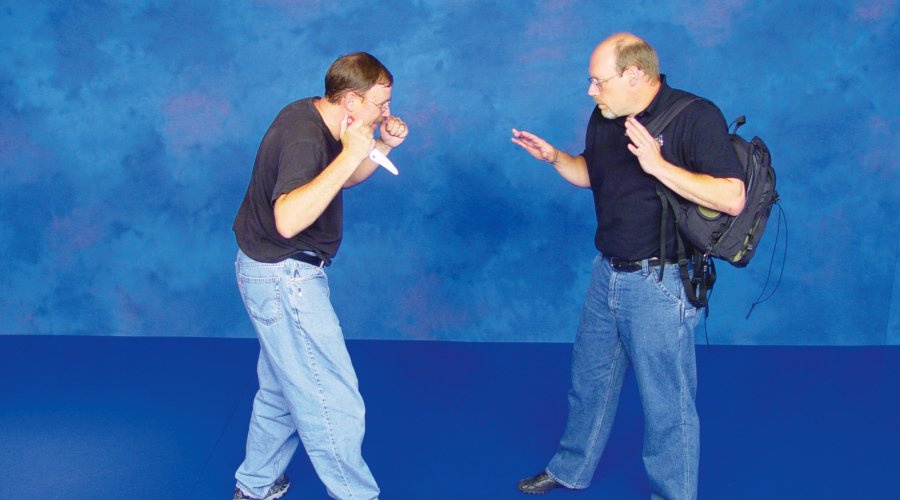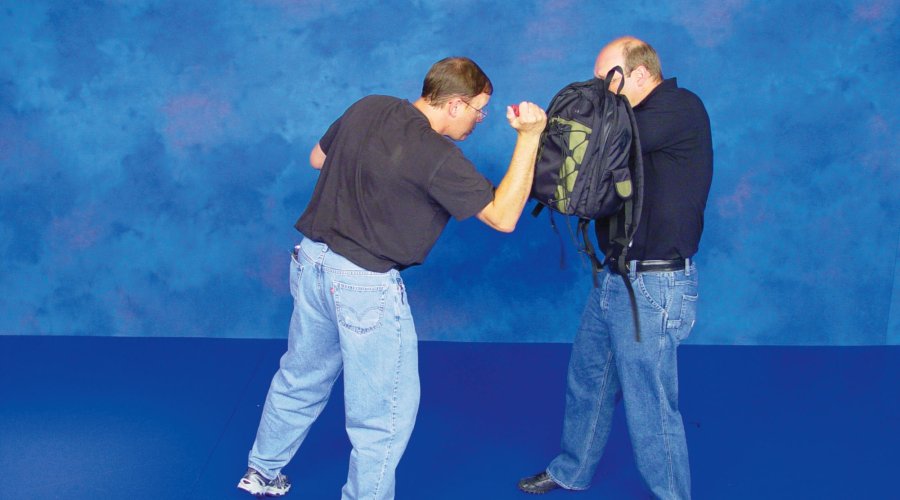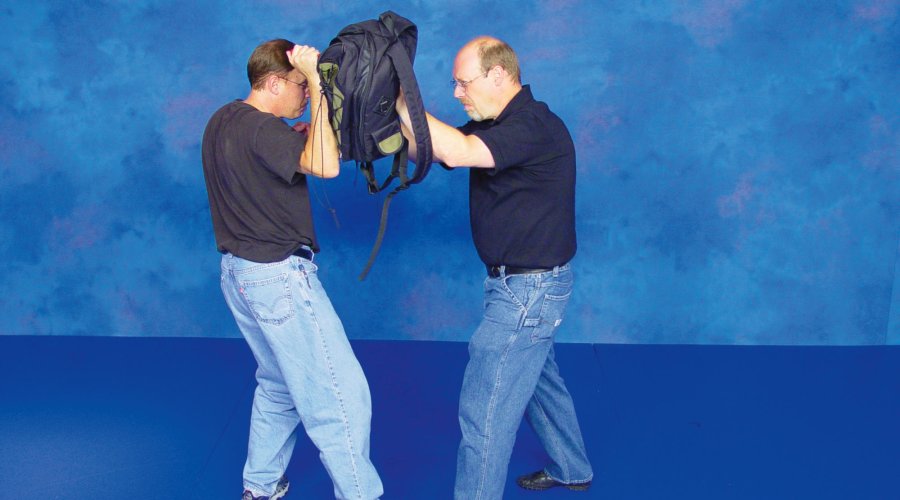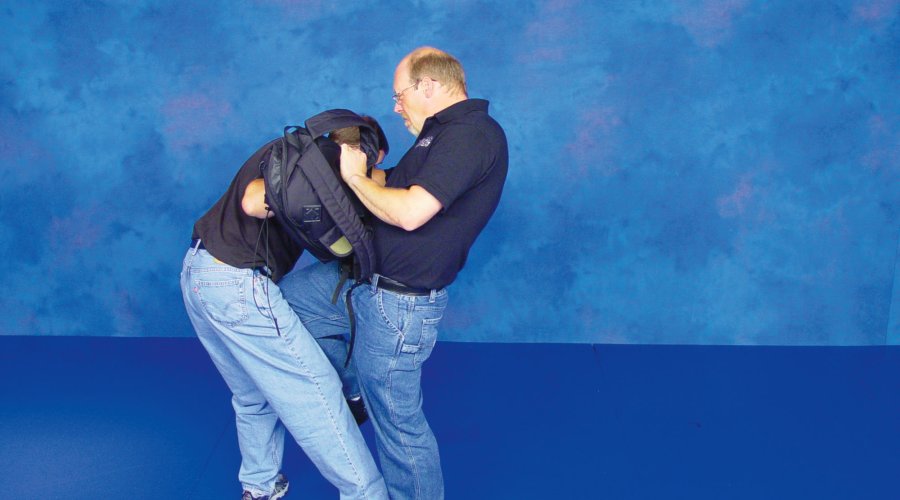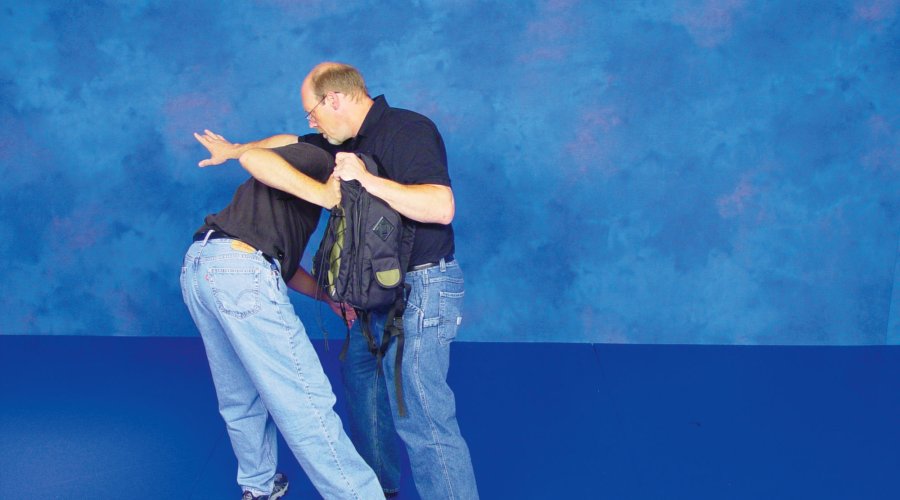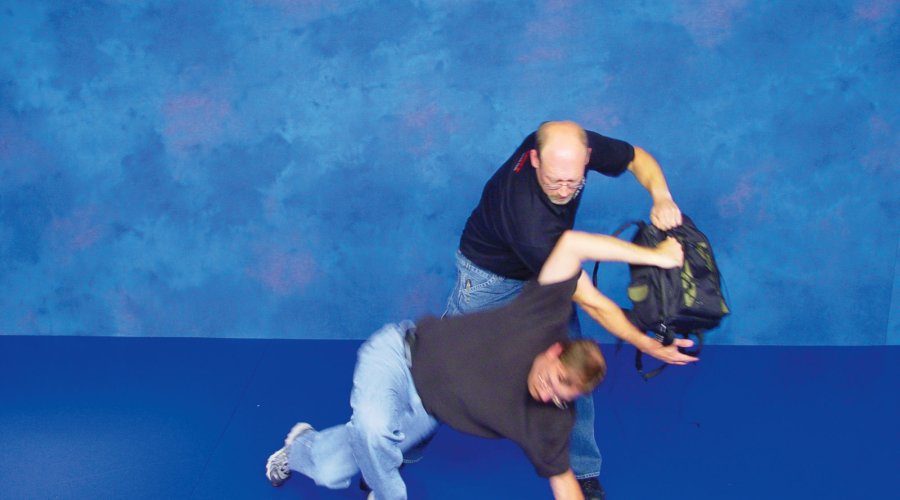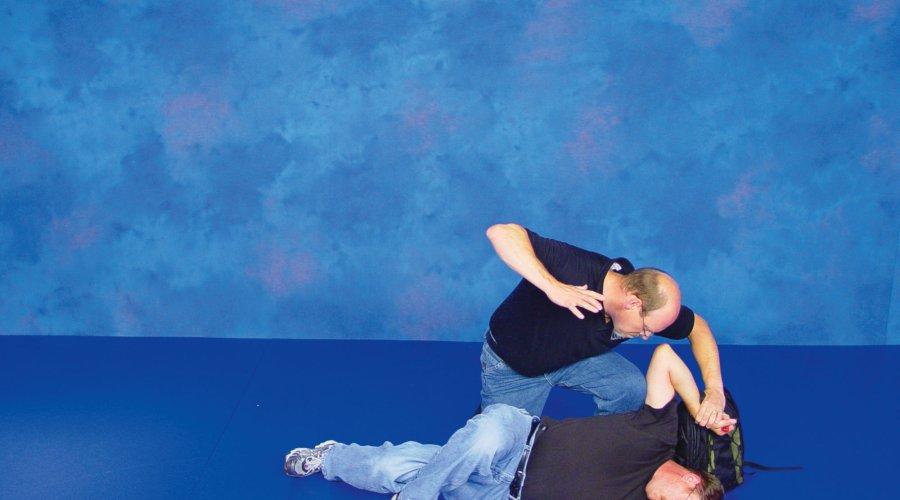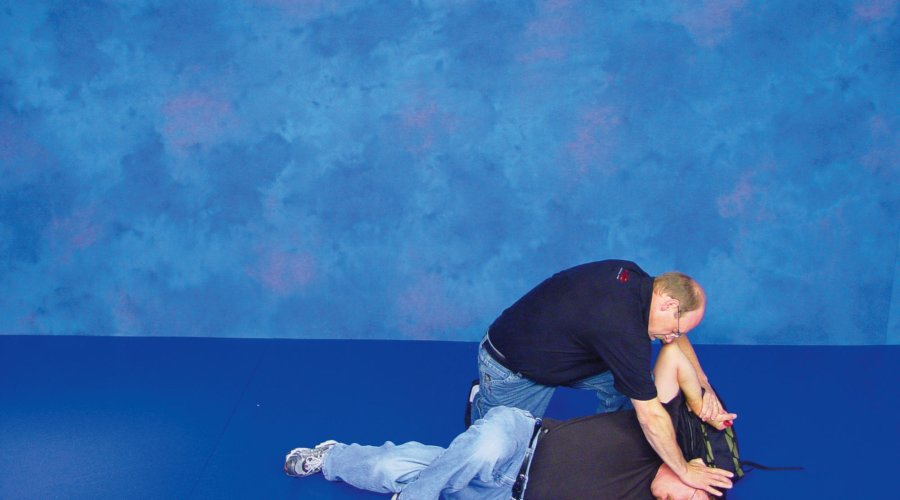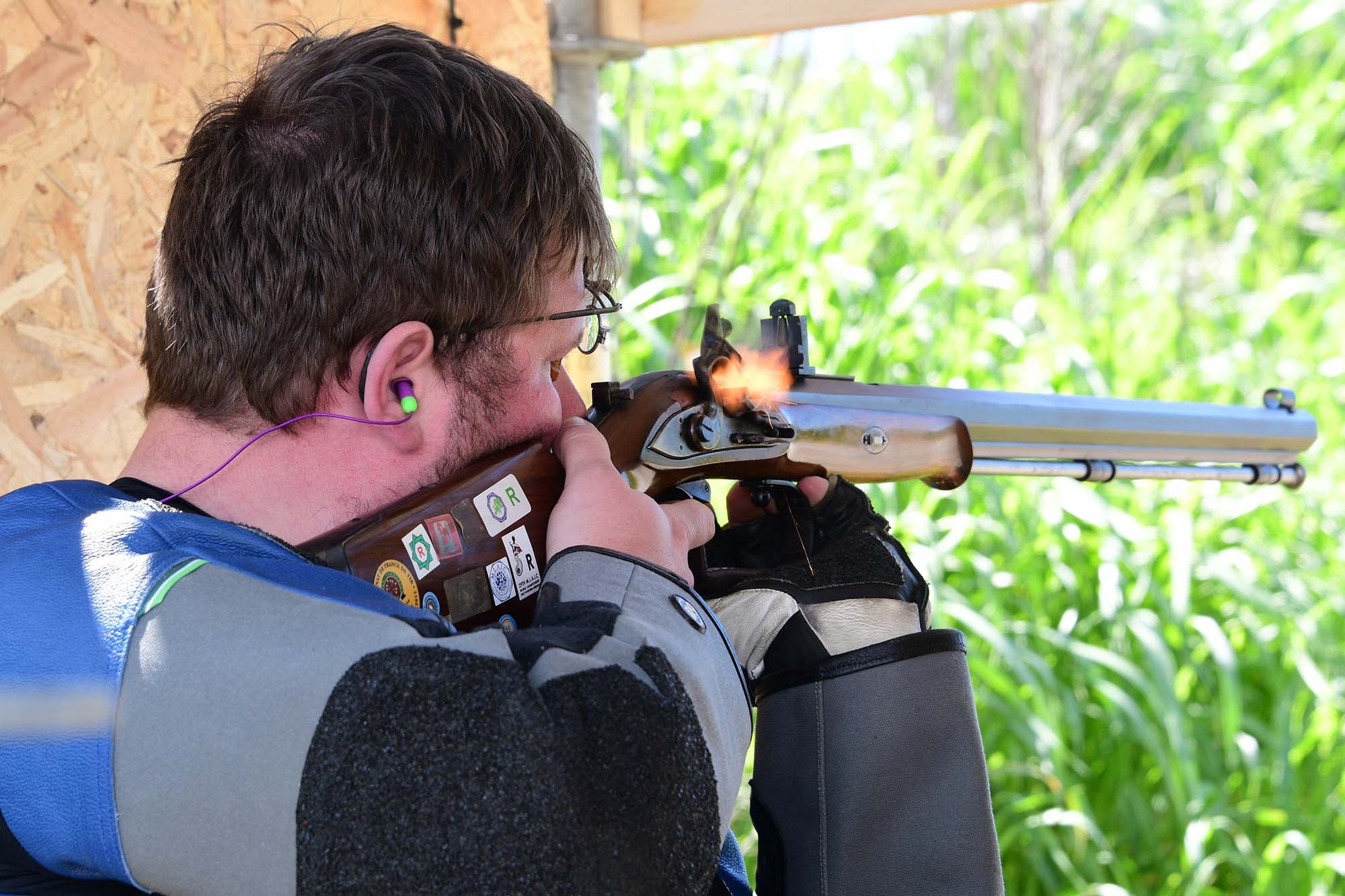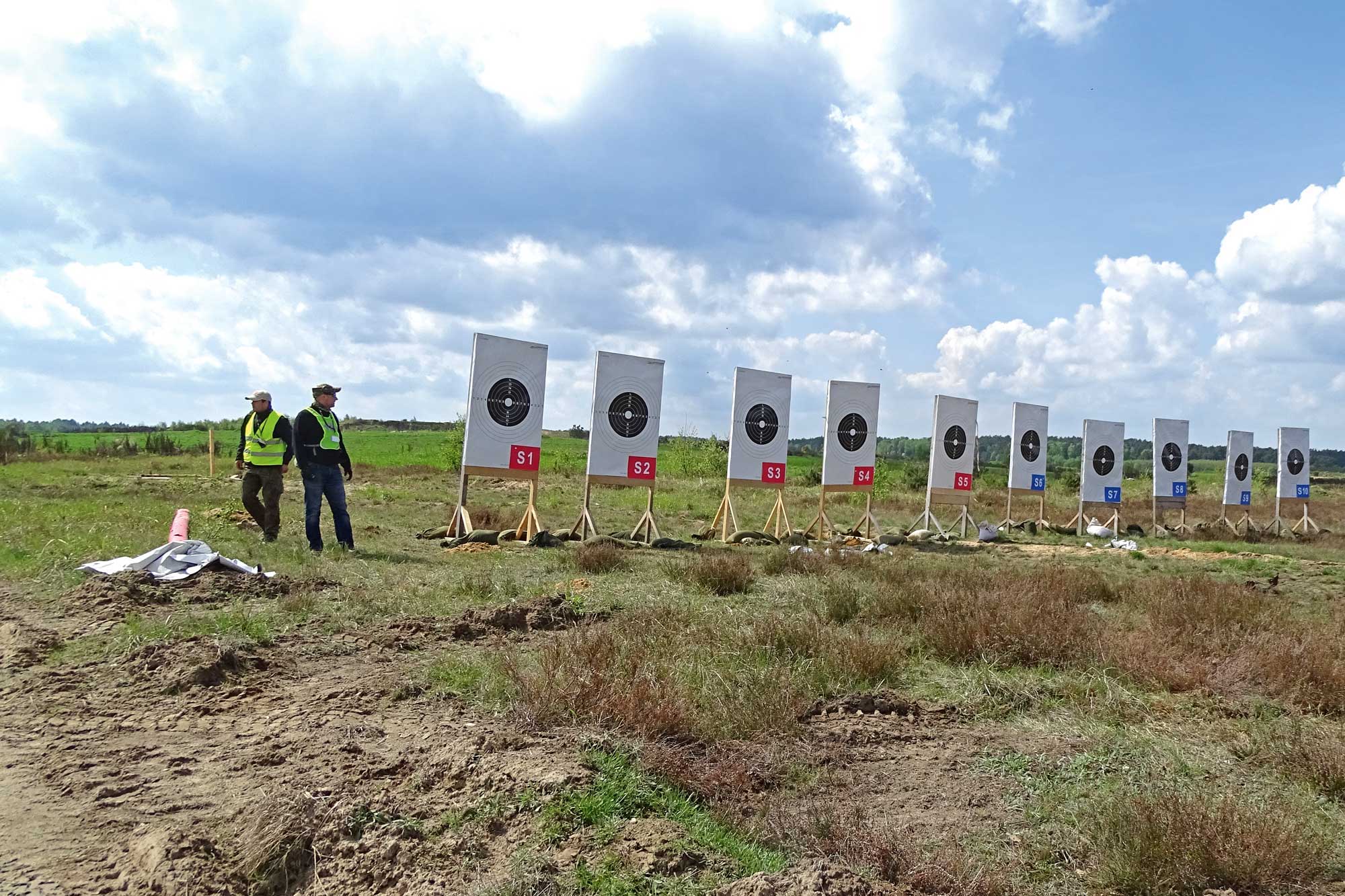The reason for integrating a shield is obvious: if you face an opponent armed with an edged weapon, defending from your opponent's attacks, blows and stabs with a shield is much easier than with your own weapon. Compared to blocks with a weapon, shield defense tactics are also easier to learn because they offer more room for error due to their large surface area.
Self-defense with shield: no longer up to date?
Of course, in today's world it would hardly be appropriate, highly conspicuous and therefore more than impractical to carry a classic combat shield with you, but the concept itself is far from extinct. One of my instructors and training partners, Michael Rigg, lived in New York City many, many years ago. In those days, he still had long hair and was often dressed in clothes that today would probably be described under the term "hippie fashion". An integral part of this style was a large shoulder bag that he hung around his shoulder every day. One day, on his way from home to work, he was attacked by a criminal who flashed a knife in front of him and demanded his money. Even though Rigg, full of wisdom, handed over his money immediately, the robber was probably not satisfied with his prey and pushed his knife in the direction of Rigg's belly. With the presence of mind Rigg reacted with pure instinct, retreated and more or less unintentionally swung his shoulder bag in front of his upper body. Fortunately, the bag also contained books and daily newspapers, so the knife thrust was caught, stopped and Riggs life probably saved.
Modern battle shields to ward off knives
If we combine the lesson we can draw from this incident with the tactics of traditional shield defense and trends in today's fashion, then the current equivalent of the medieval battle shield may be the backpack or one of the many "tactical" shoulder bags. Lightweight, comfortable, practical and often packed with laptops, office supplies or literature of all kinds, a backpack can be a very effective everyday tool when forced to fend off a knife attack. As with any other self-defense instrument, the way you carry your backpack plays a crucial role, so that it is quickly ready to use in the event of a knife attack. The best way is to carry the backpack with a strap on the non-dominant body side/shoulder (i.e. on the left side if you are right-handed) and hook your thumb under the strap. If you feel potentially threatened in a situation, pull the backpack from your shoulder in a fluid movement and position it in front of your body. If you use both backpack shoulder straps, because the load is easier to carry, you can still switch to the one-sided carrying method if you suspect danger in advance. If the backpack has quick-release buckles on the straps, when the backpack is carried using both straps the right one can also be quickly released in order to swivel the pack in front of the body in a protective way. In defensive situations, the pack is held with both hands on its back in order to better control it and its weight during fast movements.
Shield tactics for knife defense
With the backpack in the correct protective position in front of our upper body, we bring a barrier between us and the attacker's knife that is not so easy to overcome. In order to take full advantage of our self-defense tool, we should take the initiative and act consistently. If the opponent starts to make cuts and stabs, force the backpack with both arms in the direction of the attacks in order to catch the blade as early as possible in its movement path. Correctly executed, we nip the attacker's attempts in the bud and far before they can unfold their full power. In addition, we can also unbalance the aggressor through our approach, and we should take advantage of any sign of weakness or vulnerability on his part to knee the aggressor's groin or fire deep kicks against the aggressor's knee joints, shins or ankles. The declared goal is to destroy the attacker's mobility in order to create distance and prepare a safe escape. In the tactics described, however, the relationship between one's own physical strength and the weight of the backpack must also be taken into account.
Weight and contents are decisive for the defense
If the backpack is so packed and heavy that you can hardly move it, fast defensive maneuvers are of course hardly feasible. Of course, the contents of the backpack are also of decisive importance in an emergency, as they determine whether a well sharpened knife blade, for example, can be effectively intercepted. For this reason, you could also think about making your backpack even more efficient as a defense tool. A tight fitting insert plate made of a hard, impact-resistant and strong material could be a sensible, discreet upgrade. Many backpacks have compartments for the popular bladders with hose connections, and these storage compartments are ideal for accommodating a protective plate. The simple but very effective tactic of using a defensive shield against armed attacks can be carried out with many everyday objects besides a backpack. Briefcases, handbags, chairs, stools, and so on can be improvised weapons or defense instruments. As a mental exercise within the framework of general awareness to increase self-defense, for example, you can repeatedly select and assess everyday items with regard to their suitability as self-defense instruments. You will notice that there are a lot of them. Train hard, stay safe!
You can read the other parts of our series here:
- Basics of self-defense and the defense against the "swing" ·
- The defense against a “stranglehold” attack
- The standard sequence as the foundation of successful self-defense
- The defense against a common street attack: the collar grip
- The defense against improvised weapons
- Self-defense in ground fighting
- The defense against kicks on the ground
- Defense techniques with the walking stick
- Advanced stick techniques
- Knife defense with bare hands
- Knife defense: the "Split X"



